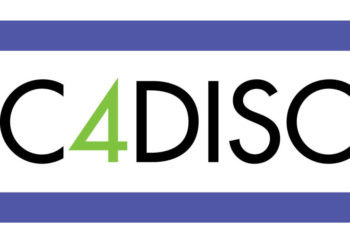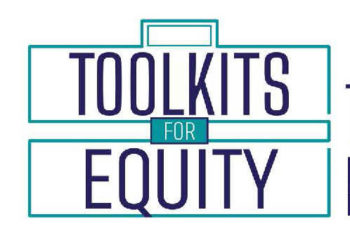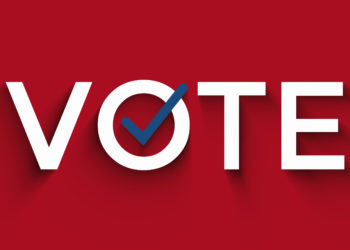Editor’s Note: Today’s post is by Susan Spilka. Susan is one of the co-founders of the Workplace Equity Project. Susan was Corporate Communications at Wiley for two decades, and was the first CHORUS Communications & Marketing Director. She is now Director of Strategic Communications at TBI Communications, a consultancy serving the publishing and nonprofit sectors.
This year, Emerald Publishing commissioned three surveys on academic and public views of what inequity feels like, the meaning of inclusivity, the barriers to it, and the benefits of an inclusive society. The surveys also explored perceptions of the role of research in overcoming the challenges to inclusivity and possible actions for change. The academic survey was sent to over 130,000 researchers in 202 countries from Emerald’s database; more than 1,000 people in 99 countries completed it. General public data came from two samples of 1,000 people each in the UK and US, via One Poll. Analysis of this research was published over the summer as “The Global Inclusivity Report 2020”, along with a wealth of supporting data, insights, and commentary from thought leaders in the research community (new content continues to be published regularly).
I spoke with Erika Valenti, Emerald EVP and US Regional Director, to piece together a narrative from insights gleaned from the responses from the academic community and the general public.

Understanding the Cycle
It is well-documented in the research literature that inclusive workplaces lead to higher levels of job satisfaction, better staff retention, greater productivity, and more innovation. There is so much evidence to cite, but these two pioneers, McKinsey and Catalyst, have done a lot to build the business case for diversity, equity, and inclusion (DEI). It is very clear that where diversity and inclusivity are prioritized, institutions are more likely to attract talent and funding, and increase the impact of their research output.
So, it is not surprising that a huge majority of global academic respondents recognize and value one or more benefits of inclusivity, from “promotes different ways of thinking,” the most highly valued (selected by 92% of academics globally), to “has an economic benefit” (80%). It’s also clear that there is a small contingent of outliers: 13% of the academic respondents do not perceive any benefit from inclusivity. Public perceptions of the benefits of inclusivity are lower across the board, however, interestingly, just 4% of the general public (US and UK) don’t see any benefits.
Academics identify biases in recruitment/promotions, manager/leadership attitudes, and too much pressure on career progression as their most significant workplace hurdles. In contrast, the public sees the barriers in broader terms, citing race, gender, and age discrimination (against older folks) as the top three.
The academic community has long been grappling with unconscious bias in recruitment and promotions, particularly at senior levels. Academic institutions have made strides in advancing gender equity, but the Emerald survey shows that most academics do not think sexism has been banished from campus, or that the battle for parity has been won in the world at large. In North America, 59% of academics still see gender discrimination as a key societal obstacle, with 20% more women than men citing it as a significant issue. This validates a finding from the Workplace Equity Survey, that people tend to be blind to the challenges faced by other demographic groups (with the exception of Black respondents). It is also significant that more female than male academics (61% versus 55%) single out manager/leadership attitudes as problematic.
Race/ethnicity(83%) is cited as an even greater barrier to inclusivity around the world, although there are regional and audience differences worth noting. Significantly smaller percentages of the public in the US (47%) and UK (42%) identify racial/ethnic discrimination as a major obstacle than academic respondents (83% US, 69% UK). It’s important to note that while the percentages of the US and UK public who view racial discrimination as the top barrier is much lower than academics, it is nonetheless cited as the biggest barrier by both public segments. That is not surprising in an industry that the Workplace Equity Survey found to be over 80% White (2018). Among the US public, there is significant variance across the generations: 40% (aged 18-34) versus over 50% (35+) agree that racial discrimination is the biggest barrier.
Elsewhere in the world, 76% of Australasian academics also rank racial /ethnic discrimination as a top barrier, as do 71% of those in Northern and Western European — not far behind their US counterparts. On the other hand, the issue is not as pressing for academics in Southern and Eastern Europe, the Middle East, Africa, Asia, and Latin America. As a result, only 58% of academics globally cite race/ethnicity as a top barrier, probably reflecting the differences in cultural sensitivities, as well as other factors.
What can we draw from this? It makes sense that the percentages in each segment are higher in North America, with its long history of racial segregation and discrimination. Fundamental differences around the health and social care system also enable the UK to buffer some of the extremes found in the US. That said, while Britain is regarded as a multicultural society, rich in diversity, its record of inclusivity is checkered and the doors to its centers of research and universities are among the hardest to open. Class — which is often closely tied to race — was rated by 61% of UK academics as a significant barrier.
Racial discrimination appears to be a less pressing issue than poverty in many parts of the world, where the latter is among the top three barriers globally (60%), ranking highest in Latin America, Asia, the Middle East, North Africa, Sub-Saharan Africa, and Southern and Eastern Europe. It’s also among the top three issues for academics in the US and UK – though interestingly not for the UK public. Australia stands out, with race/ethnicity, disability, and ageism (against older people) as its top three barriers. As industry DEI activist Simon Holt points out, “Some data (e.g., on gender, race) are easier to gather than others that rely more on self-identification (e.g. LGBTQ, disability), though it is more culturally acceptable to do so in certain countries than others.”
The three surveys’ findings point to systemic problems and counterproductive dynamics within and beyond the academic community. Over 60% of academics see “poor decision making by policy makers” as holding back progress. Other major factors include “a lack of willingness of people to change” (58%) and “a lack of people being aware of the issues” (45%). It was striking to read that at least half of the academics who responded don’t believe that their priorities are shared by those who govern and fund their work: 86% ranked inclusivity as important to them personally, but fewer thought it was important to their institutions (68%), “academia in general” (64%), and funders (50%). One wonders why – are papers they submit on DEI research not making it through the funding and publishing pipeline? When evidence and insights don’t reach business leaders and policymakers, the cycle feeds on itself. Perhaps that’s why only 30% of the public acknowledge the power of research in driving positive change.
On a more positive note, 51% of the academic respondents believe that research enables policymakers to make better evidence-based decisions. Asked about the main benefit to research of achieving a more inclusive society, they cited international and interdisciplinary collaboration as a top factor in promoting different ways of thinking and sparking creative solutions. More than 60% of the academics surveyed think that aligning published content with the United Nations Sustainable Development Goals (SDGs) will help governments, businesses, and civil societies worldwide to overcome the complex challenges we face today. Nearly 80% support increased funding for meeting the SDGs, which emphasize that social, economic, and political inclusion is essential to sustainable global progress. Like many publishers, Emerald Publishing is working toward this – aligning what they publish with the SDGs as a priority and offering open research gateways for rapid publication to bolster SDG-related research outputs.
My Top Takeaways
There is a lot to digest in Emerald’s growing body of DEI research and commentary — my reading touches on only one theme: academics hold inclusivity in high regard and see research (in alignment with the UN Sustainable Development Goals) as a catalyst for organizational and societal change. The public shows much less enthusiasm and support for DEI and SDG efforts, which the findings suggest is likely due to a lack of awareness. The data validates what those of us in scholarly publishing know and encourages us to persist in what we are doing: tackling the persistent cultural issues that affect academic culture and along the research pipeline, and making sure that evidence is in the hands of those who can and will drive change.
As Erika told me, “We have a unique opportunity to help shape a more equitable world. We can make a huge impact by driving cultural change in our own organizations and reaching beyond with the research we publish and disseminate, which has the power to influence, inform, and improve the world.”
A future blog post will focus on the report’s recommendations for what publishers, specifically, can do to create more equitable organizations that break the cycle and enrich a diverse research ecosystem.
Discussion
5 Thoughts on "Guest Post — What We Can Learn from How Academics and the Public View Diversity, Inclusion, and Equity"
Dear Susan!
Nice writing on Diversity, Inclusion, and Equity.
I wonder how we will achieve this in a word where the sun and moon are unable to enlighten its all places at one time. Just a thought.
Anyway we must continue doing our best that Diversity, Inclusion, and Equity is seen everywhere in this word.
Thanks, Fazal. I think the only way change can happen is that committed people keep at it despite the odds and setbacks!
This has been a recent hot topic. Many conferences lots of notices but how widespread is it really? I am not certain how much we can draw from these numbers. 130,000 surveys went out but only1000 returned. That would mean that only less than 1%, or 0.00769%, actually replied. That would lead me to believe that there was not much interest. Those who replied would skew to those who already have strong feelings one way or the other. Is that a good basis for extrapolation and planning?
With data from over 1,000 academics, and then a similar count from each of the US and UK public surveys — Emerald reports they are confident that the results are statistically sound, and they represent the view of broader communities on the subjects. Moreover, the findings generally align with anecdotal evidence and data from previous studies.
The report was written to highlight the relative views of academia and the public on issues around inclusivity. Emerald’s hope that the findings can drive more conversation and inquiry, get more diverse voices to the table, and help to realize UN SDG goals. This link (https://www.emeraldgrouppublishing.com/sites/default/files/2020-06/emerald-global-inclusivity-report-demographics.pdf) provides more demographics detail.
I’ll check with the Emerald folks about the response rates. But I would add that it doesn’t necessarily mean anything significant about their feelings about the subject that they didn’t answer the survey. And that’s no reason to give up. A lack of awareness (people don’t perceive bias experienced by others) can be remedied with repeated communication. Once you see it, it’s hard to unsee it. Interestingly, one CNN exit poll I heard last night put racial bias as the most important issue to Biden voters. There is a groundswell.



